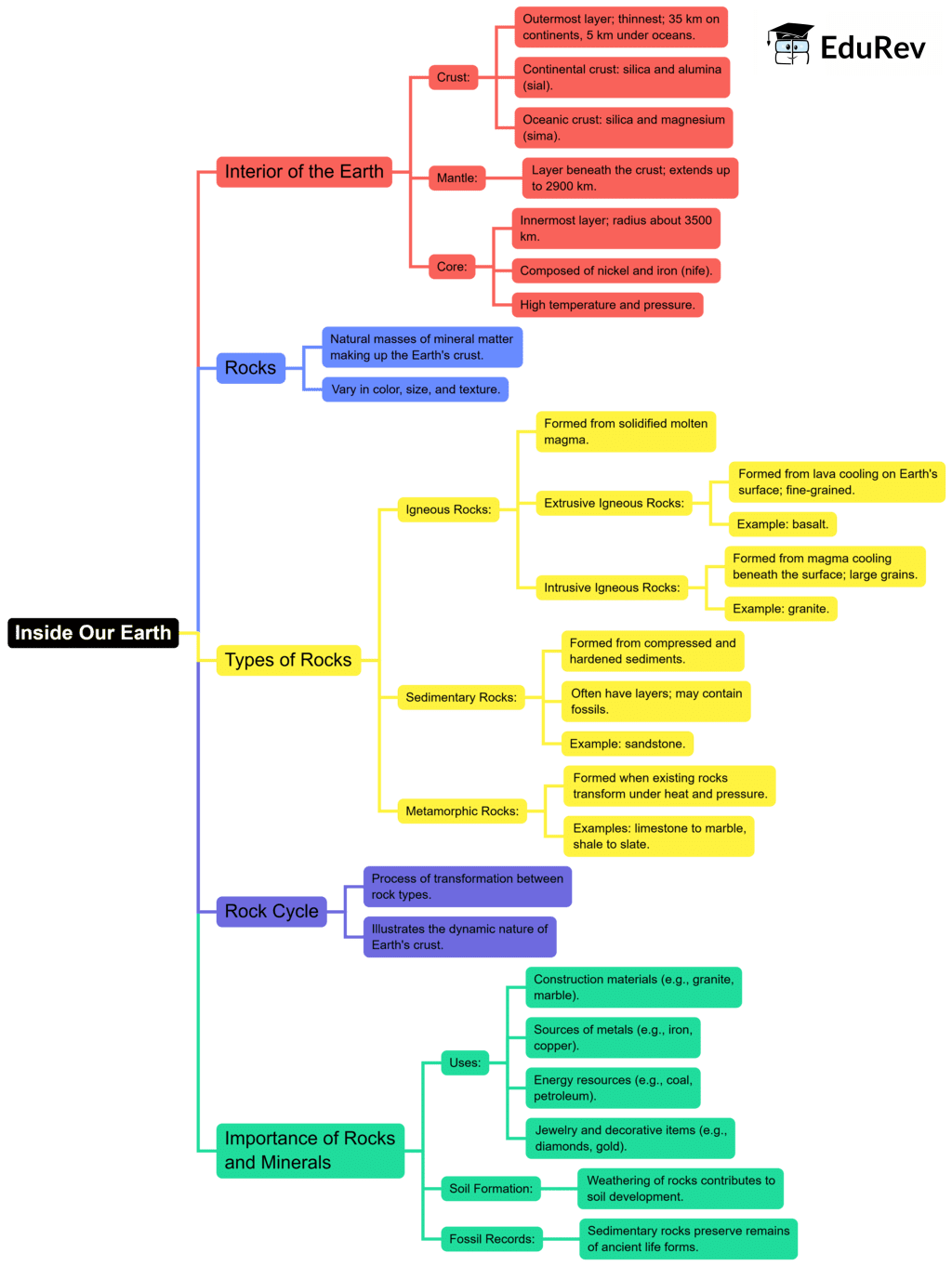Class 7 Exam > Class 7 Notes > Mind Map: Inside our Earth
Mind Map: Inside our Earth - Class 7 PDF Download
FAQs on Mind Map: Inside our Earth - Class 7
| 1. What is inside our Earth? |  |
Ans. Inside our Earth, there are several layers. The outermost layer is called the crust, followed by the mantle and the core. The crust is made up of rocks and minerals, while the mantle is mostly solid rock. The core is divided into two parts, the outer core which is liquid and the inner core which is solid.
| 2. How deep is the Earth's crust? |  |
Ans. The depth of the Earth's crust varies depending on the location. On average, the crust is about 30 kilometers thick beneath the continents and around 5 kilometers thick beneath the oceans. However, in some areas, such as mountain ranges, the crust can be much thicker.
| 3. What is the composition of the Earth's core? |  |
Ans. The Earth's core is primarily composed of iron and nickel. It is believed to have a solid inner core and a liquid outer core. The high temperatures and pressures in the core cause the iron and nickel to be in a molten state.
| 4. How do scientists study the Earth's interior? |  |
Ans. Scientists study the Earth's interior through various methods. One common method is seismology, which involves analyzing seismic waves generated by earthquakes. By measuring the speed and direction of these waves as they travel through the Earth, scientists can infer the composition and structure of the Earth's interior.
| 5. What role does the Earth's interior play in plate tectonics? |  |
Ans. The Earth's interior plays a crucial role in plate tectonics, which is the theory that explains the movement of the Earth's lithosphere (crust and upper mantle). The movement of the lithospheric plates is driven by the convection currents in the semi-fluid asthenosphere beneath them. These convection currents are generated by the heat from the Earth's interior, causing the plates to move and interact with each other at plate boundaries.
Related Searches
















